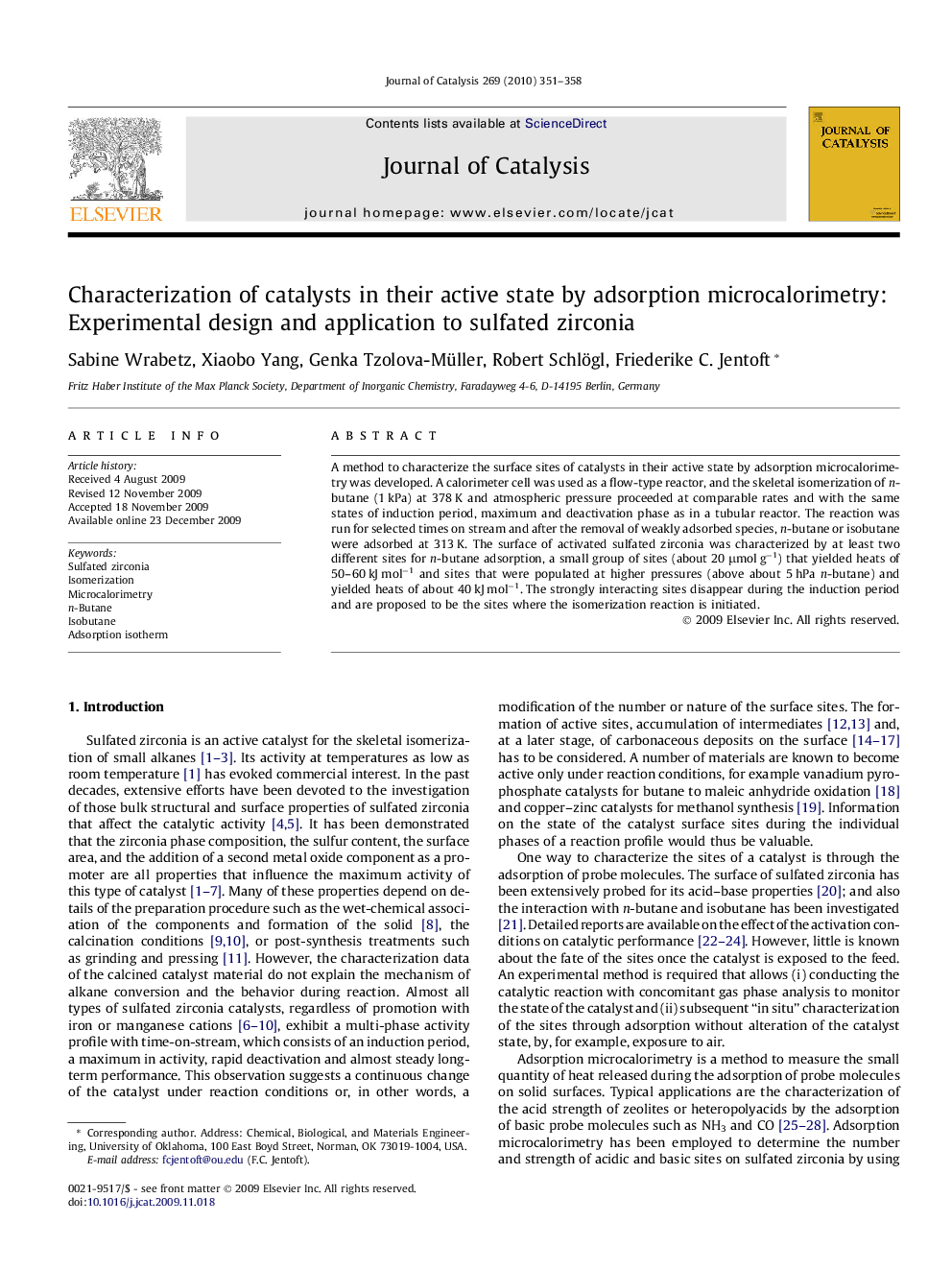| کد مقاله | کد نشریه | سال انتشار | مقاله انگلیسی | نسخه تمام متن |
|---|---|---|---|---|
| 62022 | 47617 | 2010 | 8 صفحه PDF | دانلود رایگان |

A method to characterize the surface sites of catalysts in their active state by adsorption microcalorimetry was developed. A calorimeter cell was used as a flow-type reactor, and the skeletal isomerization of n-butane (1 kPa) at 378 K and atmospheric pressure proceeded at comparable rates and with the same states of induction period, maximum and deactivation phase as in a tubular reactor. The reaction was run for selected times on stream and after the removal of weakly adsorbed species, n-butane or isobutane were adsorbed at 313 K. The surface of activated sulfated zirconia was characterized by at least two different sites for n-butane adsorption, a small group of sites (about 20 μmol g−1) that yielded heats of 50–60 kJ mol−1 and sites that were populated at higher pressures (above about 5 hPa n-butane) and yielded heats of about 40 kJ mol−1. The strongly interacting sites disappear during the induction period and are proposed to be the sites where the isomerization reaction is initiated.
A calorimeter cell was used as a flow reactor to generate an active sulfated zirconia catalyst. Differential heats of butane adsorption measured subsequently in situ indicate that a small fraction of sites is altered as the catalyst changes its performance.Figure optionsDownload high-quality image (182 K)Download as PowerPoint slide
Journal: Journal of Catalysis - Volume 269, Issue 2, 5 February 2010, Pages 351–358